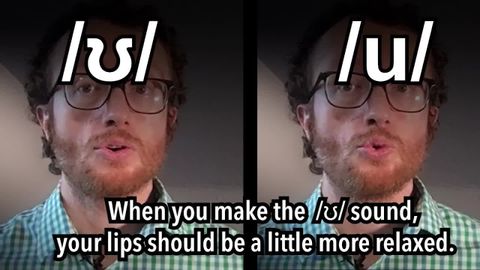如何發音。/ʊ/ vs. / u/ (How to Pronounce: /ʊ/ vs. / u/)
 沒有此條件下的單字
沒有此條件下的單字US /prəˌnʌnsiˈeʃən/
・
UK /prəˌnʌnsiˈeɪʃn/
- n. (c./u.)發音;正確發音;發音方式;發音指南
US /ˈpræktɪs/
・
UK /'præktɪs/
- n.(醫生;律師等的)業務;工作;練習;慣例
- v.t./i.(醫生;律師等)開業;實踐;練習;操練;實踐
US /pəˈzɪʃən/
・
UK /pəˈzɪʃn/
- n. (c./u.)態度,觀點;位置;(團隊運動中個人所處的)位置;職位;處境;優勢
- v.t.定位;放置
US /ˈpriviəs/
・
UK /ˈpri:viəs/
- adj.先前的;以往的;前一個的
- n.上一個
- adv.先前地
